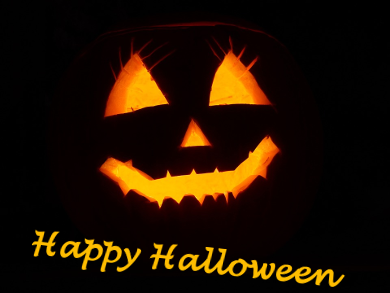The Celts, Indo-European people who from 2000–1 BC spread over much of Europe, thought that at the end of summer the barrier between our world and the world of weird creatures with strange powers such as ghosts and spirits gets very thin. They held a party to scare these creatures away. Later this day became known as All Hallows’ Eve—the day before All Saints’ Day, a Christian feast on November 1.
Halloween became popular in the United States during the 19th century. It was probably introduced there by Irish immigrants. The tradition of carving pumpkins and trick or treating became popular worldwide during the 20th century.
How much do you know about pumpkins?
.png)
From the Greek word pepon for “large melon”

A macrocyclic molecule made of glycoluril monomers linked by methylene bridges

Carotenoid compounds

Water

Vitamin A

Cooking and digesting
Also of Interest




